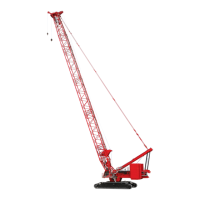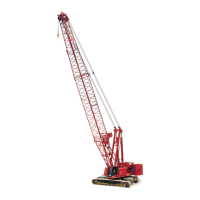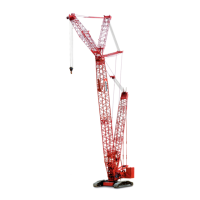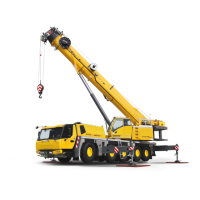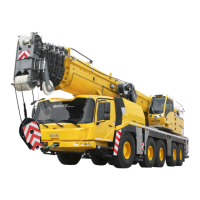Manitowoc Published 11-22-17, Control # 257-02 10-1
MLC300 SERVICE/MAINTENANCE MANUAL ACCESSORIES
10
SECTION 10
ACCESSORIES
WARMING CIRCUIT
See Figure 10-1 and Figure 10-2 for the following
descriptions.
At startup, the control system allows the engine water jacket
to warm up for approximately two minutes before activating
the warming circuit. This is done to prevent the engine from
lugging down.
Once activated, the warming circuit maintains a minimum oil
temperature in the hydraulic tank of 15,6°C to 18,3°C (60°F
to 65°F).
To accomplish this, a temperature sensor (6) in the hydraulic
tank (7) sends an electrical signal representing hydraulic
fluid temperature to the IOLC34 control module. The IOLC34
control module then relays this information to CCM-10 and
IOLC33 control modules via the controller area network bus
(CAN Bus) C.
Warming Circuit Operation—Accessory
Circuit Not Active
When the hydraulic fluid temperature is less than 15,6°C
(60°F) and no accessory circuits are active, the IOLC33
control module sends 24 V
DC
to the corresponding solenoid
on isolation valve A (9), energizing the solenoid. The CCM-
10 control module provides the ground for the solenoid.
With the isolation valve A solenoid energized, the isolation
valve spool shifts to a position that allows hydraulic fluid from
the hydraulic main pump 4 (3) to flow to the valves of
accessory circuits (8) and to the warming relief valve (10).
At the same time, the CCM-10 control module increases the
pulse width modulation (PWM) current to pump 4 to increase
hydraulic flow to the system A (left) valve assembly.
When no accessory circuit is active, the hydraulic fluid is
dead headed, causing the hydraulic pressure in the
accessory circuit to increase. When the pressure rises to
370—375 bar (5,366—5,439 psi), the warming relief valve
opens to divert hydraulic fluid to the hydraulic tank.
With the circuit in relief, the hydraulic fluid temperature
increases until the temperature reaches 18,3°C (65°F), at
which point, the IOLC33 control module de-energizes the
isolation valve A solenoid.
The de-energized solenoid causes the isolation valve spool
to shift to neutral, blocking pump flow to the accessory
circuits. At the same time, the CCM-10 control module ramps
down the PWM current to pump 4.
This causes the hydraulic pressure in the accessory circuit to
drop. When the hydraulic pressure drops below the specified
relief valve setting, the warming relief valve closes.
The cycle repeats as needed to maintain the specified
minimum temperature.
Warming Circuit Operation—Accessory
Circuit Active
When an accessory circuit is activated during the time when
the warming relief valve is open, the warming control circuit
will stop hydraulic flow by temporarily de-energizing the
isolation valve A solenoid. This causes the hydraulic
pressure in the accessory circuit to drop, closing the
warming relief valve. The warming circuit then re-energizes
the isolation valve A solenoid to resume providing hydraulic
flow to the activated accessory circuit.
During operation of an accessory circuit, the warming relief
valve protects the accessory circuits from pressures above
the specified range.
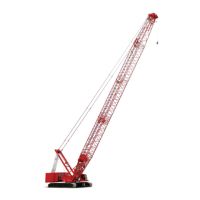
